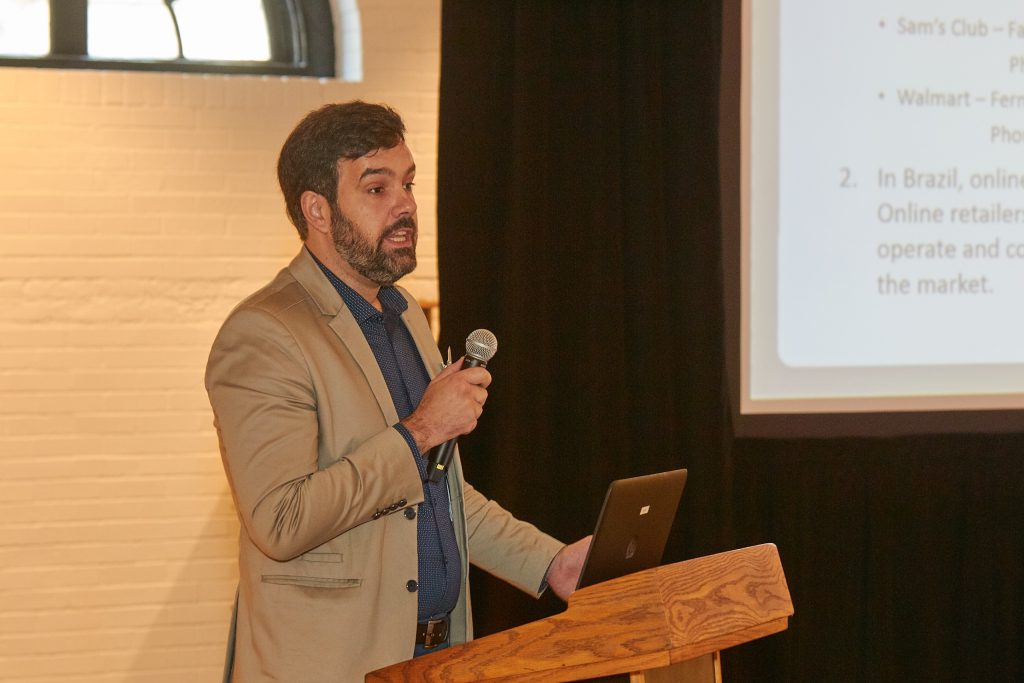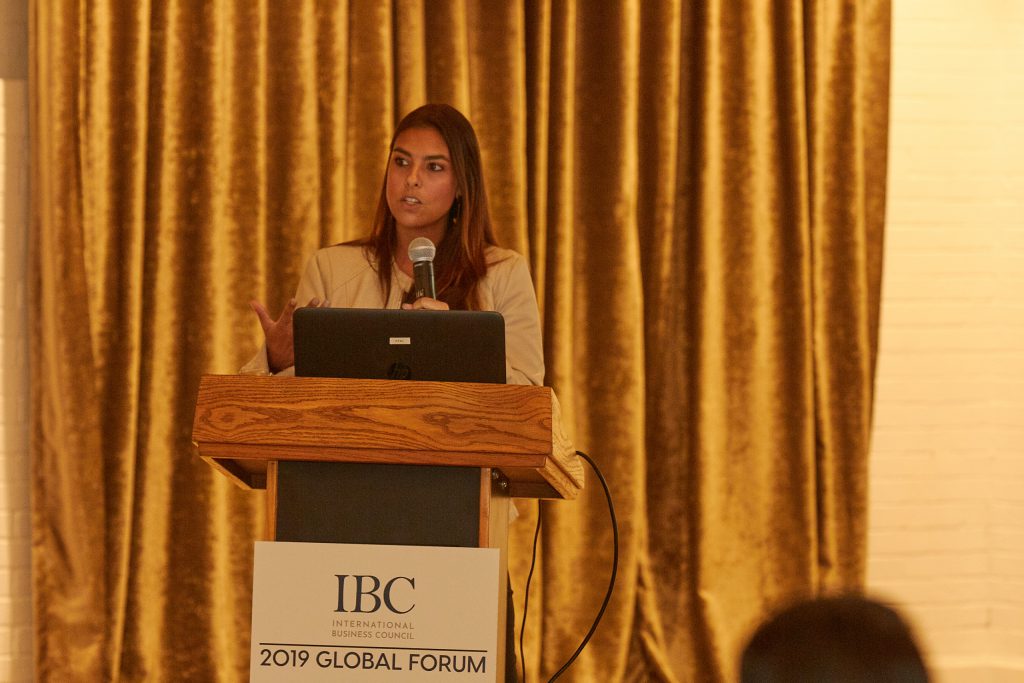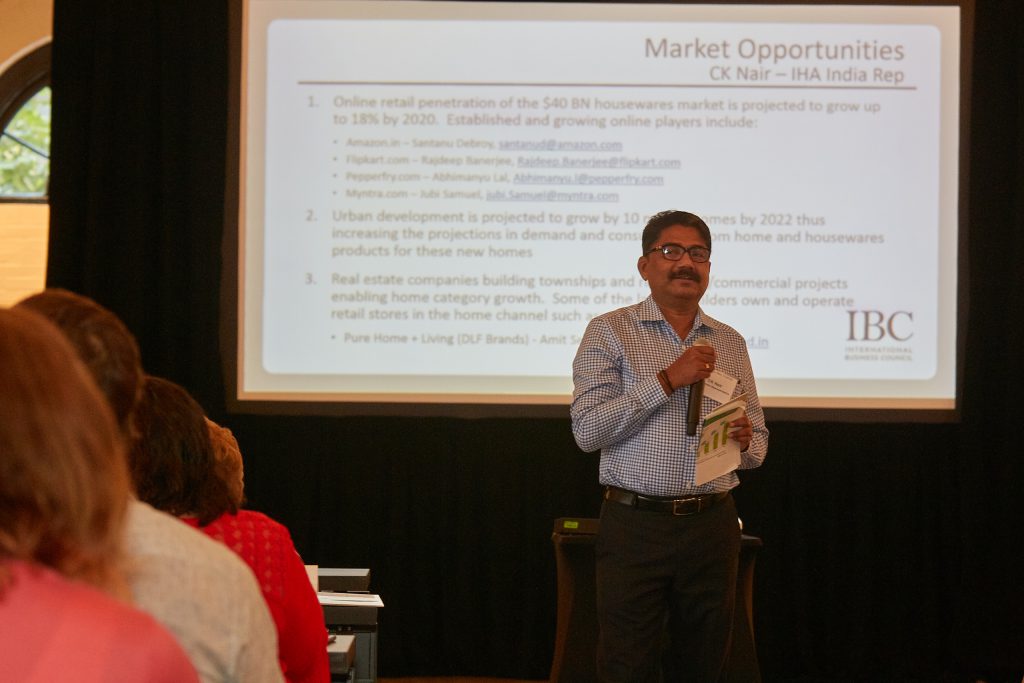Eduardo Lemus, IBC Global Forum program chair, opened Day
Two with a summary of the day’s sessions and introduced the IHA Offices and
representatives who outlined retail conditions in their countries.
Lourdes Ramirez, Mexico; Alex Pinheiro, Brazil; Catalina Moscoso, Colombia and
Ecuador; and C.K. Nair, India. Each presenter included names and contact
information for buyers at the stores they highlighted in their summaries. Each
speaker also took questions from the floor and met individually with attendees with
specific questions.
Lourdes Ramirez, Business Development Partners, Mexico

- The Mexican market has an abundance of both domestic and international retailers with strong home and housewares product offerings. The best known domestic chains include: Liverpool, Palacio de Hierro, The Home Store and Wal-Mart Mexico.
- E-commerce retail sales in Mexico have more than doubled since 2015. This success is being realized by online-only and brick and mortar retailers. Amazon Mexico is growing.
- Mexico continues to be very active in developing shopping malls across the country. Consumers are attracted to malls for the entertainment offerings and retailers are opening new stores to capitalize on the popularity with families.
- The closing of Lowe’s Mexico has afforded competitors such as Home Depot and Sodimac the opportunity to take market share in the country.
Alex Pinheiro, Monchu Lacroix, IHA Brazil representative

As IHA’s representative in Brazil, Pinheiro’s region of responsibility also includes Argentina, Chile, Paraguay, Peru, Uruguay, and Bolivia.
- The changes in ownership at Wal-Mart and Sam’s Club Brazil may result in new opportunities. Buyers will have more flexibility in adding new vendors and products.
- In Brazil, online retailers are growing while brick and mortar is struggling. Online retailers such as Amazon are forcing changes in how importers operate and could result in improved opportunities for brands to enter the market.
- Anticipated Brazilian tax reform would mean that multiple layers of current taxes are replaced by VAT, making products making products more affordable to consumers.
- In Chile distributors are starting to open their own brick and mortar retail stores as well availing online purchasing directly to consumers, instead of simply selling to existing retailers.
- In spite of struggles in the market in Brazil, the pet category continues to grow. The following are a few of the retailers specializing in pet products: Cobasi, 87 stores; Petz, 94 stores Petland, 100 stores.
Catalina Moscoso, LeCook Home, IHA representative for Colombia and Ecuador

- Online sales ranked #4 in LATAM and is continuing to exhibit strong growth. A key online retailer with home and housewares products is Grupo Exito.
- Lifestyle retail growth continuing in Colombia with stores such as AmbienteLiving, Miniso, Exito Wow and a new player Lätt Liv, a Scandinavian lifestyle concept store. Opportunities exist for manufacturers willing to provide private label products.
- Ecuador is taking the lead with the elimination of single-use plastic products currently on shelves. Mi Comisariato El Rosado is replacing 25% of their plastic products currently on shelves with eco-alternatives by year end.
- Dollarcity arrived in Colombia in 2016 and has become the leader in the “hard-discount” store format. Dollarcity sells Home, Pets and Seasonal Products.
- As a leader in South American retail, Grupo Éxito with 2,600 stores, continues to expand throughout the region. Exito has presence in Colombia through Grupo Éxito; in Brasil as Grupo Pão de Açúcar; Uruguay as Grupo Disco and Grupo Devoto and Argentina with Libertad.
CK Nair, CK Nair Retail Consultancy, IHA India representative

India’s population is about 1.37 billion, which equals 18% of the world population. The country is home to 14 million retail stores, employing 7-8% of the total population. Retail is responsible for 10% of total employment in the country. India offers great opportunities with its rapidly growing market size.
- Online retail penetration of the $40 BN housewares market is projected to grow up to 18% by 2020. Established and growing online players include: Amazon.in; Flipkart.com; Pepperfry.com; and Myntra.com.
- Urban development is projected to grow by 10 million homes by 2022 thus increasing the projections in demand and consumption from home and housewares products for these new homes.
- Real estate companies building townships and residential/commercial projects enabling home category growth. Some of the largest builders own and operate retail stores in the home channel such as Pure Home + Living (DLF Brands).
- Home organization and cleaning are growing categories of focus for Indian retailers. Some key retailers experiencing this growth are as follows: Shopperstop, Landmark, Onestop, Reliance Brands, Future Group, Urbanladder. All are exploring/concentrating more on tools and gadgets, storage and cleaning products.
- Travel accessories from mugs to backpacks, to bottles, flasks or picnic baskets are growing in demand in India. Young India is venturing into short and long trips in their own vehicles. Currently, online retailers are doing more sales in the category. Travel does not include luggage category.



